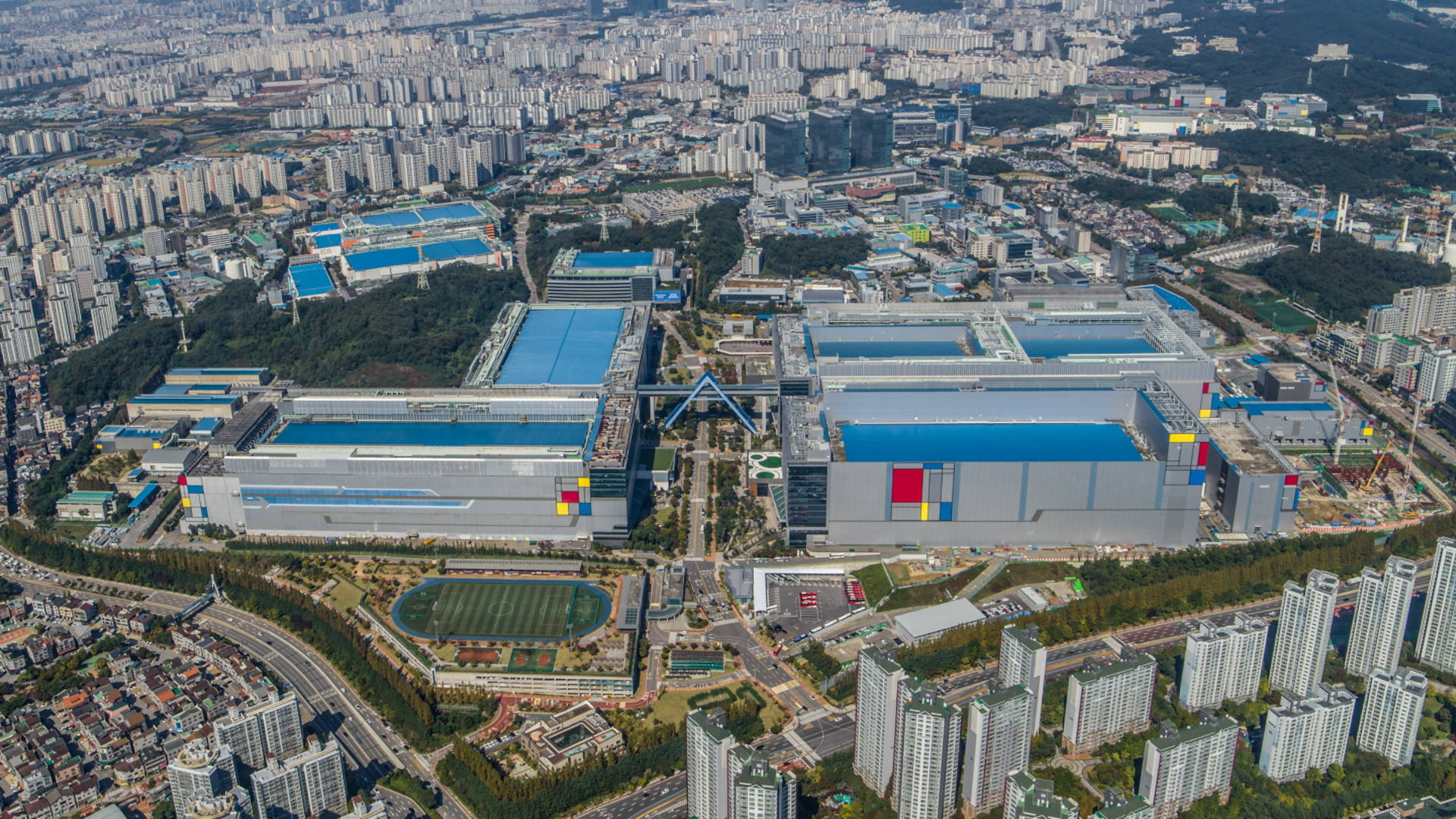Samsung workers union is calling for an indefinite strike, to which the bosses claim there will infeasibly be 'no disruptions' to production
All while TSMC enjoys a market cap just shy of one trillion dollars.

With an estimated 15-fold increase in operating profits, everything looks rosy for Samsung Electronics, thanks to the AI world's demand for memory chips. However, while DRAM, flash memory, and other chips are ranking in the money, thousands of workers are going on an indefinite strike and independent research predicts that its worldwide market share in chip manufacturing will tumble from 31% to just 9% by 2032.
It's fair to say that Samsung Electronics, the chip manufacturing and electronics division of the Samsung Group, is going through some mixed fortunes of late. AI's insatiable appetite for high-end RAM and flash memory chips has pushed prices by as much as 20% in the second quarter of the financial year (via Reuters).
Although that growth has subsided, it still resulted in Samsung predicting a 23% increase in revenue and a staggering 1470% rise in operating profits compared to a year ago. That colossal gain in profits is mostly down to Samsung cancelling a writedown of its older chip inventory, as demand for those has suddenly increased, raising their value considerably.
But while the money is clearly rolling in on the back of the AI boom, all is not well at Samsung. The NSEU (National Samsung Electronics Union) has just concluded a three day strike (as reported by the BBC), demanding better pay and benefits, but it's already called for another strike to start today—except this one is to be indefinite.
With approximately 30,000 members in the union, it would only require a small percentage of them to go on strike to have a noticeable impact on Samsung's productivity, though the company has told the BBC that "no disruptions [will] occur in the production lines."
At a conference discussing South Korea's national strategy for semiconductors (via X-user Harukaze5719), Samsung's vice president of global research, Ian Jae, bemoaned the lack of government support for chip manufacturing, compared to that implemented by the United States, Japan, and the EU.
Citing examples such as financial incentives, subsidies, and even the harshness of penalties for people breaking laws on technology leaks, Jae also drew attention to some independent research on how the global production share of high-end chips (i.e. sub-10 nm) will change in the coming years.
The biggest gaming news, reviews and hardware deals
Keep up to date with the most important stories and the best deals, as picked by the PC Gamer team.
By 2032, Jae claimed that the US will have 28% of the share, the EU and Japan will have 6% and 5% respectively, and Korea will drop from its current 31% market share to just 9%. If you're wondering where the other half is, that's almost certainly going to be TMSC, in Taiwan.

Best CPU for gaming: The top chips from Intel and AMD.
Best gaming motherboard: The right boards.
Best graphics card: Your perfect pixel-pusher awaits.
Best SSD for gaming: Get into the game ahead of the rest.
Its chip foundries are currently second only to TSMC but while Samsung Electronics's so-called DS segment is its second biggest source of revenue, its operating profits have been somewhat dire of late.
Even the recent boost in fortunes is unlikely to calm nerves, as Samsung's HMB (High Memory Bandwidth) RAM chips have reportedly failed to meet Nvidia's requirements to be used in its Blackwell AI processors and there's no concrete indication that any of the major fabless companies (AMD, Nvidia, and Qualcomm) are looking to use Samsung foundries to manufacture their top-end chips.
Even if Samsung gets the government support it wants and manages to allay the concerns of its workers' union, the drive to transfer as much of the supply chain from Asia to the US and Europe as possible means that it's highly unlikely to maintain its 30% share of the chip industry. But Samsung is clearly going to do everything in its power to still be the second-largest chip manufacturer by the end of the decade.

Nick, gaming, and computers all first met in 1981, with the love affair starting on a Sinclair ZX81 in kit form and a book on ZX Basic. He ended up becoming a physics and IT teacher, but by the late 1990s decided it was time to cut his teeth writing for a long defunct UK tech site. He went on to do the same at Madonion, helping to write the help files for 3DMark and PCMark. After a short stint working at Beyond3D.com, Nick joined Futuremark (MadOnion rebranded) full-time, as editor-in-chief for its gaming and hardware section, YouGamers. After the site shutdown, he became an engineering and computing lecturer for many years, but missed the writing bug. Cue four years at TechSpot.com and over 100 long articles on anything and everything. He freely admits to being far too obsessed with GPUs and open world grindy RPGs, but who isn't these days?

